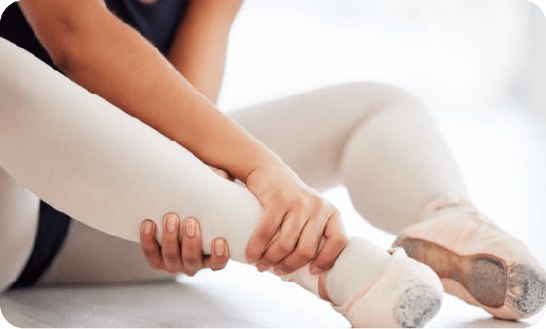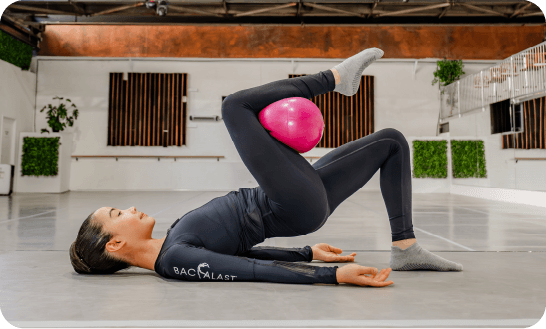Bending Not Breaking: How we can assist "Injury Prevention"?
Dancers have always been known for their resilience, work ethic, extreme stretching abilities and incredible pain threshold. Today, the consumerist mentality of the modern world, where everything is just a click away, has helped cultivate a talented, determined but decidedly impatient community of young artists eager to achieve results that demand stretching and potentially overstretching their current capacity.
How Does Social Media Affect Dance Training?

You can't learn to run (much less dance) before you’ve learnt to walk - a popular and arguably overused cliche but it remains resoundingly true. Owing to social media, aspiring dancers and professionals are able to scroll through multiple snapshots of bendy individuals stretching their legs to their ears, videos of seamless pirouettes, or glorified photos of overstretched foot arches, often neglecting to consider the time or effort it took to unlock those capabilities.
Ambition is non-negotiable in the harsh and at times brutal world of dance, but these ambitions must be achieved in a staged and structured manner so as to avoid potential dance injuries and the dangers that accompany stretching one's natural limits.
Should Dancers Push Past Pain?
The recent 2024 Olympics saw athletes across artistic fields push themselves to new limits. Taped backs, knees and ankles peppered TV screens as immediate glory trumped long term sustainable practice. Though a toss up between a gold medal and a long career may be a genuine and perhaps admirable dilemma for certain athletes, for dancers it doesn't need to be.
Expert dance physiotherapists and medical professionals aim to reduce dance injuries by emphasising the importance of combining stretching exercises with strength training.
Are Dance Injuries Normal?

In the dance community, the idea of overstretching your boundaries and pushing yourself to extremes is not just commended but normalised. The feats dancers are expected to achieve are far from anatomically normal, twisting, stretching and bending into shapes that seem entirely implausible for many audience members.
In an article published by the Standard, commenting on English National Ballet’s infamous series ‘Agony and Ecstasy,’ the writer reports that ‘it is normal to dance through injuries.’ Although easily misunderstood, the author is simply communicating his findings rather than perpetuating a potentially destructive narrative.
In fact a collective assumption that pain and injury is just the nature of the job seems to have ok’d the Royal Ballet’s 427 time-loss injuries between 2015 and 2020 as published in the American College of Sports Medicine.
The ‘do what you have to rather than what you need to’ mentality seems to be influencing young dancers' training methods and stretching routines at an alarming rate. With an increase in content creators, and a growing demand for 'real' content, professionals have opened their doors and instagram feeds to young and impressionable aspiring dancers as they reveal what it takes to achieve such extreme flexibility.
The ballet mirror selfie usually entails a dancer stretching in splits between two chairs, each chair providing a rest for one of her legs. A stream of impressed 'bun-heads' flooding her comment section will only inspire more material of the same nature: stretching by the beach, stretching on a train or even stretching at the airport. The picture opportunities are endless.
Able to see their favourite principals elaborately posing and stretching in exquisite tutus and seeking to imitate that, the race to be the most bendy ballerina in the studio is on, and the likelihood of injury... leaps ahead.
A Common Cause of Dance Injuries
Overstretching is one of the most common causes of injuries in dance.
Excessive stress on joints, ligaments and tendons could cause conditions such as:
Ligament laxity.
Ligaments are tough tissue bands that provide support and stability by ensuring bones do not stretch too far apart. If these tissues become too flexible, then the joints they support can become unstable, increasing both pain and the likelihood of injury.
Muscles Tears
Muscles are also badly affected by excessive stretching exercises. Pushing beyond capacity could lead to micro-tears, and if exacerbated, debilitating strains and muscle tears.
Do Dance Injuries Have Long Lasting Effects?
The often romanticised albeit true saying ‘once a dancer always a dancer’ is unfortunately not solely reserved for repertoire memory or a lifelong appreciation of the arts.
A study highlighted in the International Journal of Sports Physical Therapy indicates that unhealthy dance practices including overstretching contribute to long-term injuries such as labral tears.
Dancers need to remember that their body is for life not just the stage and treat it accordingly.
Why is Strengthening For Dancers So Important?

Whilst athletic influencers and gym frequenters on social media often concentrate on sharing videos pertaining to their strengthening routine, this step by step tutorial content seems to be pushed aside in the dance community and replaced with the glitz and glam of stage lights, overstretched limbs and pointe shoes.
Whilst this is not to be criticised, it does mean that young dancers may be sucked into an echo chamber of ‘flexibility hacks’ inspired by overstretched split poses, rather than sustainable, supportive strengthening.
For dancers hoping to have a long and healthy career or for individuals looking to prevent injuries, both related and non-related to stretching, a gradual, controlled and progressive strengthening and stretching routine is needed to create effective and long-lasting results.
Skipping the foundations for a solid and secure technique may produce fast results, but a neglect of delayed gratification could risk causing easily preventable injuries.
Does How We Speak to Dancers Really Matter?
A shift in rhetoric regarding dancers’ hard work is necessary to create a community of healthy, injury free, strong and successful dancers.
Individuals should be encouraged to do their best, to give a 100% but not 110%; to stretch their limits but not overstretch them. Flexibility should not be isolated but viewed as ½ of a whole; partnered with strength training to maximise effective practice.
The ‘before and after’ social media trend has perpetuated the expectation of a quick and easy fix when dealing with concerns or weaknesses. The truth is good things take a bit more time.
Methodologies such as Progressing Ballet Technique employ exercises that target key areas such as: core stability, proper alignment and correct placement to help dancers simultaneously stretch and strengthen in a controlled and effective manner.
Takeaways
In light of online influence and the plethora of easily accessible products and services, dancers risk neglecting gradual and proven practices for immediate but temporary gains.
Both an adjustment to training methods including stretching exercises, as well as the discourse encouraging training, needs to be made if dancers are to enjoy healthy careers.
Due to their flexible ligaments and backs, bending is indisputably a requirement of the profession, but teachers and students need to be careful that their efforts do not push artists to breaking point.
Sign up to our newsletter
Receive tips, news, and advice.